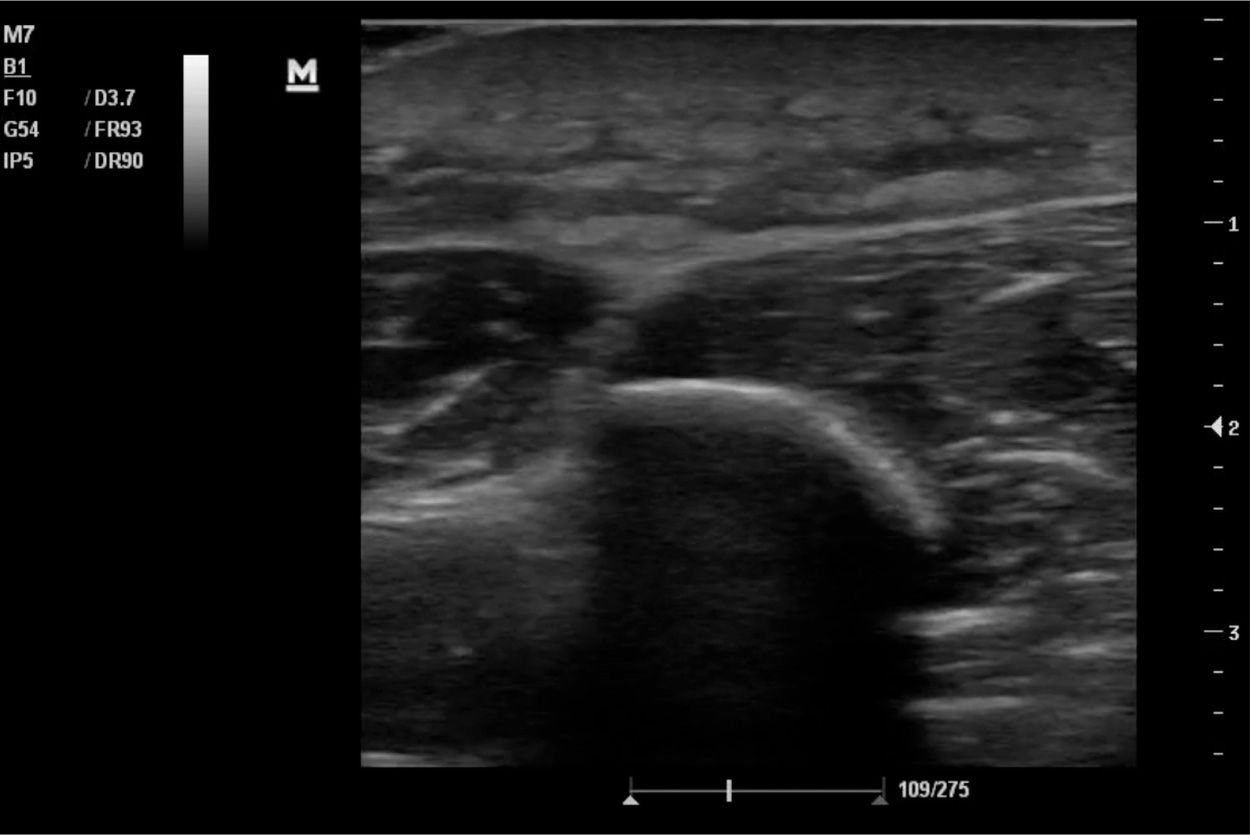![]() Identify and differentiate cellulitis from abscess with overlying cellulitis
Identify and differentiate cellulitis from abscess with overlying cellulitis
![]() Procedural guidance for incision and drainage of abscess
Procedural guidance for incision and drainage of abscess
![]() Assess soft-tissue masses
Assess soft-tissue masses
CONTRAINDICATIONS
![]() None
None
RISKS/CONSENT ISSUES
![]() Contact dermatitis from ultrasound gel (very rare)
Contact dermatitis from ultrasound gel (very rare)
TECHNIQUE
![]() Linear transducer (7.5–10+ MHz)
Linear transducer (7.5–10+ MHz)
![]() Sonographic grip—always have part of the hand, i.e., the little finger, resting upon the body of the patient when possible, as this helps stabilize the probe for fine movements
Sonographic grip—always have part of the hand, i.e., the little finger, resting upon the body of the patient when possible, as this helps stabilize the probe for fine movements
![]() Reduce depth
Reduce depth
![]() Adjust gain using a fluid-filled structure as the standard (anechoic fluid or blood should be crisply anechoic)
Adjust gain using a fluid-filled structure as the standard (anechoic fluid or blood should be crisply anechoic)
![]() Caliper function can be used to measure abscesses in two or three planes
Caliper function can be used to measure abscesses in two or three planes
![]() Assess for vascularity using color Doppler, as the presence of vascularity may result in a contraindication to incision and drainage
Assess for vascularity using color Doppler, as the presence of vascularity may result in a contraindication to incision and drainage
NORMAL SKIN AND SOFT TISSUE (FIGURE 88.1)
![]() Adjust depth to focus only on region of interest, typically 2 to 4 cm
Adjust depth to focus only on region of interest, typically 2 to 4 cm
![]() Scan a wide region, starting away from the region of interest to assess presumably normal skin and soft tissue
Scan a wide region, starting away from the region of interest to assess presumably normal skin and soft tissue
![]() Be familiar with the appearance of soft tissue and the structures within it (skin, subcutaneous tissue, blood vessels, lymph node, nerve, muscle fascicles, tendon, bone)
Be familiar with the appearance of soft tissue and the structures within it (skin, subcutaneous tissue, blood vessels, lymph node, nerve, muscle fascicles, tendon, bone)
PATHOLOGY
![]() Cellulitis (FIGURE 88.2)
Cellulitis (FIGURE 88.2)
![]() Diffuse thickened (slightly hyperechoic) subcutaneous layer and fluid (anechoic) dissecting the deeper layers of the skin and fat, creating the pathognomonic cobblestone appearance
Diffuse thickened (slightly hyperechoic) subcutaneous layer and fluid (anechoic) dissecting the deeper layers of the skin and fat, creating the pathognomonic cobblestone appearance
![]() Can see thin hyperechogenic transverse layers between layers of normal dermis
Can see thin hyperechogenic transverse layers between layers of normal dermis
![]() Posterior acoustic enhancement
Posterior acoustic enhancement
![]() Abscess (FIGURES 88.3–88.5)
Abscess (FIGURES 88.3–88.5)
![]() Variable appearance on ultrasound
Variable appearance on ultrasound
![]() Typically see well-defined border, but possibly irregular
Typically see well-defined border, but possibly irregular
![]() May see anechoic fluid-filled pocket with or without septae supporting loculation (debris)
May see anechoic fluid-filled pocket with or without septae supporting loculation (debris)
![]() May see posterior acoustic enhancement (shadowing)
May see posterior acoustic enhancement (shadowing)
Stay updated, free articles. Join our Telegram channel

Full access? Get Clinical Tree




